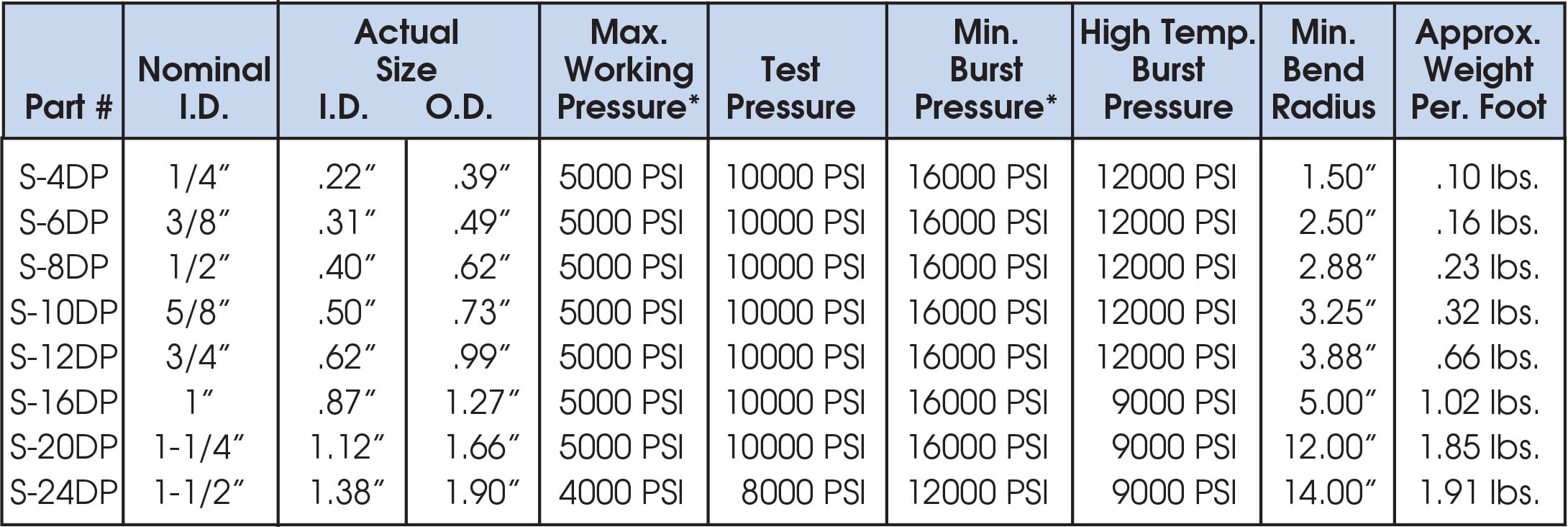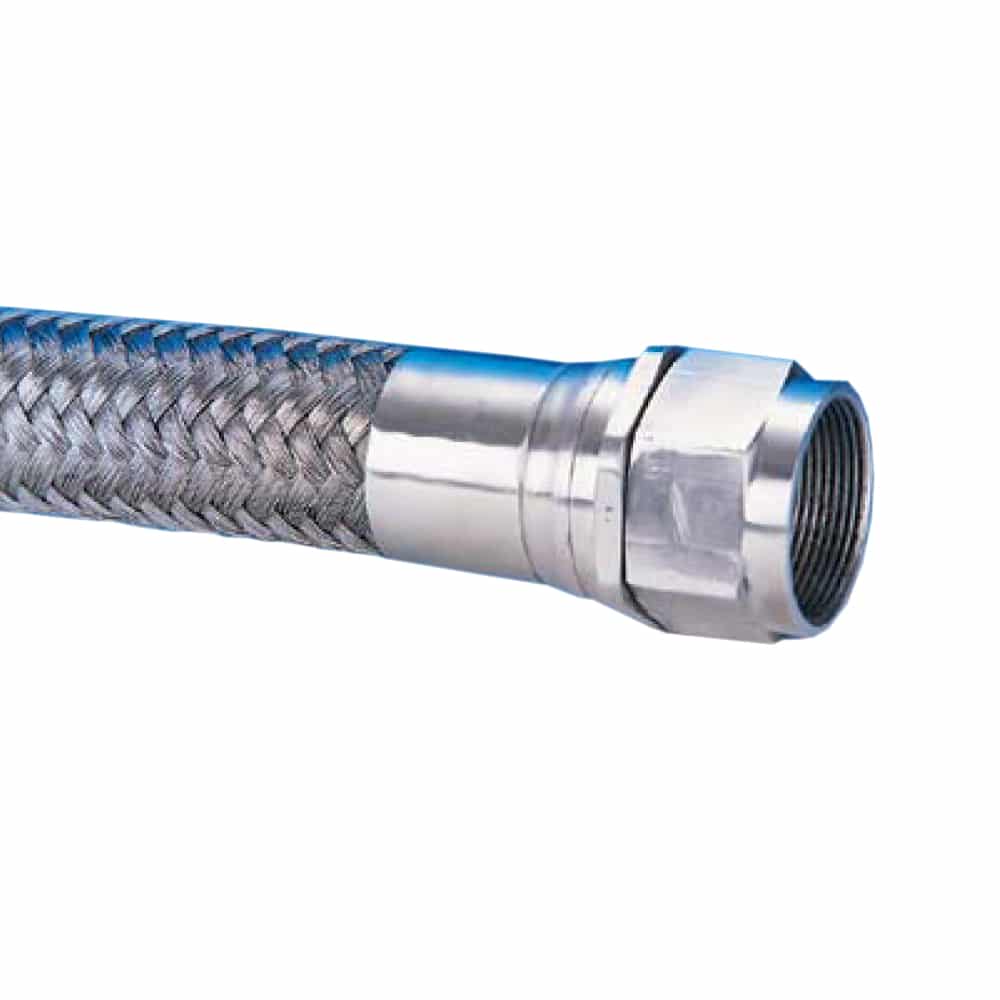The Jackson Dense-Pac (1000 Series) hose is constructed of an inner core of carbon black static dissipative PTFE.
A multitude of stainless steel wires are braided together, forming a single braid of protection. In larger sizes (-12 through -24), an additional layer of braid is added between the PTFE inner core and the outer braid. The post-sintered tube increases its density, reducing effusion in pneumatic applications. For liquid and hydraulic applications, a non-sintered PTFE tube provides lower costs without sacrificing performance.
Dense-Pac Hose • Ultra High Pressure Hose PTFE
- High Temperature Hydraulics – Steel Mills
- High Pressure Chemical Transfer
- Two Part Reaction Injection Molding
- Hot Melt Glue (Boxes & Packaging)
- High Pressure Gas (Pigtail)
- Life Support System
- Oil Field Applications
- High Temperature Heated Hose Applications
- Urethane Transfer Applications
- Extreme high pressure hose.
- Smooth bore improves flow rates.
- Resists kinking in service.
- High durability and unlimited shelf life.
- Sizes up to 1-1/2” I.D.
- Lightweight with tight bend radius.
-65°F (-54°C) to +400°F (+204°C)
Jackson’s Dense-Pac comes standard with 300 series stainless steel JIC 37° female swivels. Jackson offers a wide selection of other styles for OEM and compressed gas applications.
Please notify the factory if this hose will be used in a moisture-sensitive application.

*Minimum burst pressures calculated at 70°F. *Non-Impulse Applications. For impulse applications, working pressure is 3000 PSI. High temperature pressures calculated at 400°F; working pressure drops to 3000 PSI. Please contact the factory. For gas and breathing air applications specify DP post-sintered hose only.
We can offer a product that is less expensive if we know the application is Liquid. It is called a non post-sintered hose. “DPN Series”. If the application is a gaseous form like nitrogen or helium, you need a post-sintered hose “DP Series”. If people do not know the application, we supply the “DP Series” so we are covered for any application. The only difference in the two series is the process of making the hose. DP is sent thru the oven process twice to tighten up the molecules of the Teflon which makes the application work best for gas applications. This adds costs and labor. Only sending it thru the oven once takes costs out of the process in which we can offer a product that is less expensive to pass onto the customer and be more competitive for certain applications.

